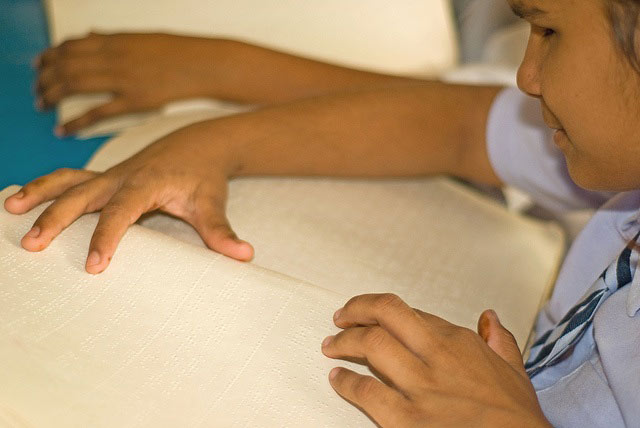Have you ever thought about Braille teaching jobs? For parents of children who rely on Braille, this may seem idealistic, and for those who have no personal ties to the language it may seem to be an offbeat path, but whatever your personal relationship is to Braille, if you’re looking to make a real impact on your students’ lives, consider the possibilities that come with teaching Braille.
The World Health Organization (WHO) has done research on the numbers of blind or visually impaired people in the world and discovered that out of 284 million visually impaired, 39 million are blind, while 245 million have low vision. Within the U.S. alone, October 2002 statistics reveal that 93,600 children are blind. The numbers have continued to rise. This means that Braille is becoming increasingly important.
For those unfamiliar with the history of the language, it all started with Louis Braille, who had been blinded in an accident in his father’s workshop when he was 3 years old. He was a boy determined to create communication pathways between the sighted and the blind and to expand the possibilities of gaining knowledge. He took the idea for Braille from captain Charles Barbier of the French Army, who had devised a system of "night writing" so that soldiers could communicate in the dark without turning on any lights. The system consisted of raised dots that soldiers could read with their fingers. Braille’s imagination was instantly sparked; fuelled by his desire to read and communicate, he took the method, altered and fine-tuned it so that each letter could be read with the touch of one finger, and created the Braille we know today. The writing system was introduced in 1829 but was not widely accepted until after Braille’s death. It has now gained world-wide recognition and use.
Braille teaching jobs require teachers with respect for reading and learning and a dedication to helping others gain a new way to understand and communicate. A teacher exhibiting a passion for reading and learning is an inspiration to students and helps give them a guiding light that encourages them to learn even when it gets tough. Being a teacher of Braille is a way to help visually impaired people experience the joy, convenience, and mind-expanding experience of reading. So if you find yourself with a love for reading and a desire to open these doors to children who don’t have the physical ability to read in other ways, consider teaching Braille.
Paths to Literacy has some excellent advice on how to make sure teaching Braille is engaging and enjoyable for the kids. Emphasizing the need to make each lesson fun, meaningful, and developmental.
The National Federation of the Blind is a great resource for Braille teachers, providing access to valuable articles and information about Braille and its modern use and information on becoming nationally certified in using Braille. According to their site, only about ten percent of blind children learn Braille in school, so that means that working to increase this number is of great importance.
For more information on fun games and activities that promote learning Braille, the Professional Development and Research Institute on Blindness has compiled a thorough list on how to incorporate Braille in fun, everyday activities.
Braille Bug gives you access to tons of free worksheets, alphabet charts, and flashcards geared towards teaching Braille to sighted kids, working to bridge the communication gap that Louis Braille recognized.
Photo Credit: JP Davidson





